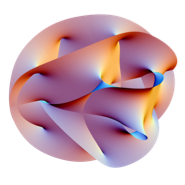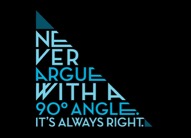Also some advices, guidelines and basic principles.
(En français)
Common tools
◊ At least form the 8th grade, a binder is recommended. In fact even though most of the lectures will be handwritten, quite many photocopies will be given.
Students don’t have to bring all the lectures. Only the complete ongoing chapter (lecture, exercises, documents) is required.
Nevertheless the wholeness has to be available at any time for a check up.
Students have to keep it up to date.
◊ At least 4 pens with different colors (for instance: blue, black, red and green)
◊ A good quality pencil (sharp and not too soft-lead) or a mechanical pencil
◊ A ruler (at least graduated with centimeter)
◊ A compass (in working order, with an extra pencil if necessary)
◊ a set quire and a protractor
◊ the class book, one for two at least
THE calculator
◊ For middle school:
Every middle school calculator . Please take care to buy a calculator with two lines display.
One line for the entry, one for the result.
In fact, often mistakes come from the entry line.
◊ For high school:
A priori, any brand, any model which has graphics and programmation capabilities.
Nevertheless, please take in account that the cheapest brands are unfortunately often difficult to use for the students.
Nowadays, the TI NSpire CX CAS is undeniably a very performing model. The price is high compare to other models, but it is an interesting investment.
The main difference between models (and prices) comes from the CAS implementation (Computer Algebra System) which allows symbolic computation.
The calculator computes as we do for instance regarding expanding, factoring, solving ….
Homework
◊ One class to the next one:
Absolutely necessary for the understanding and the mastering of the topics and the methods put forwards during the classes.
It is important that each student forces himself hard enough and spends the necessary time on each exercise, in order to at least do something.
The “I don’t understand nothing” isn’t satisfactory as there is always a little something the student can understand.
On the other hand, mistaking and not ending are completely understandable.
A student who doesn’t find how to answer the questions can still read the lecture again, look for the meaning of the wording, draw the figure (even though it is drawn in the book), …
Often to rearrange the question drives to the solution.
It is also very important to write down carefully the correction given in class and to complete one’s work, even if the result is correct.
◊ Home assignments (“devoirs maison” or “DM”):
There will be specific assignments during the school year.
Mainly the goals can be:
• reviewing some topics
• preparing the following lecture
• improving the ongoing topic
• going into in depth of the ongoing topic. In this case, exercises can be quite difficult.
• researching
• developing initiative
An exercise can bring together some of these goals.
Students will be informed when an exercise is difficult and are free to ask for help.
These assignments are marked and annotated for the student’s improvement.
It is very important that each student tries by himself.
Assesments
◊ Short tests (“interrogation écrite” or “IE”):
(usually coefficient 2)
Generally students won’t be informed. Surprise Tests.
The goal is to stimulate the learning of the students.
It could appear provoking (especially for the student) but the idea is to twist students’ natural laziness.
It can go from just writing down by heart a definition or a theorem to fundamental exercises (the same type will always have been done and practiced and corrected in class).
The total mark can be variable (from 5 or less to 20), fitting the duration (from 5 minutes to 1 hour) and the difficulty.
◊ Assesments (“Devoirs Surveillés “ or “DS”):
(usually coefficient 4)
Tests are generally built this way:
• minimum requirement ( ≈ 12 points)
• good knowledge of the topic ( ≈ 4 à 6 points)
• reinvestment of the topic ( ≈ 2 à 4 points)
Thus a good participation to the class and a regular work permit to easily overpass the average.
Ending up with the maximum mark (20) demands (much) more effort.
The “last” points yield less than the first ones, compared with the time it takes.
Each test is composed in order to assess the skills of the student, academic ones but also his rigor, his writing (explanations and reasonings), his initiative or imagination, …
The global mark takes into account all these skills together.
As an example, all the results could be correct and the mark could not be 20 because of lacks of explanations or poor writing.
Lectures
◊ Attention during the class is a major factor of success.
A significant part of the teaching cannot be written. It will be acquired through listening.
consequently, the ability of the student to maintain his attention is decisive.
◊ Lectures have to be written or filled with care and precision.
Circling the fundamentals is an efficient practice.
◊ Students have to arrive in class knowing what has been studied at the previous session.
Lectures have to be reviewed and learning has to be regular.
Thanks for your attention.
I hope these instructions and advices will be helpful.
(En français)


